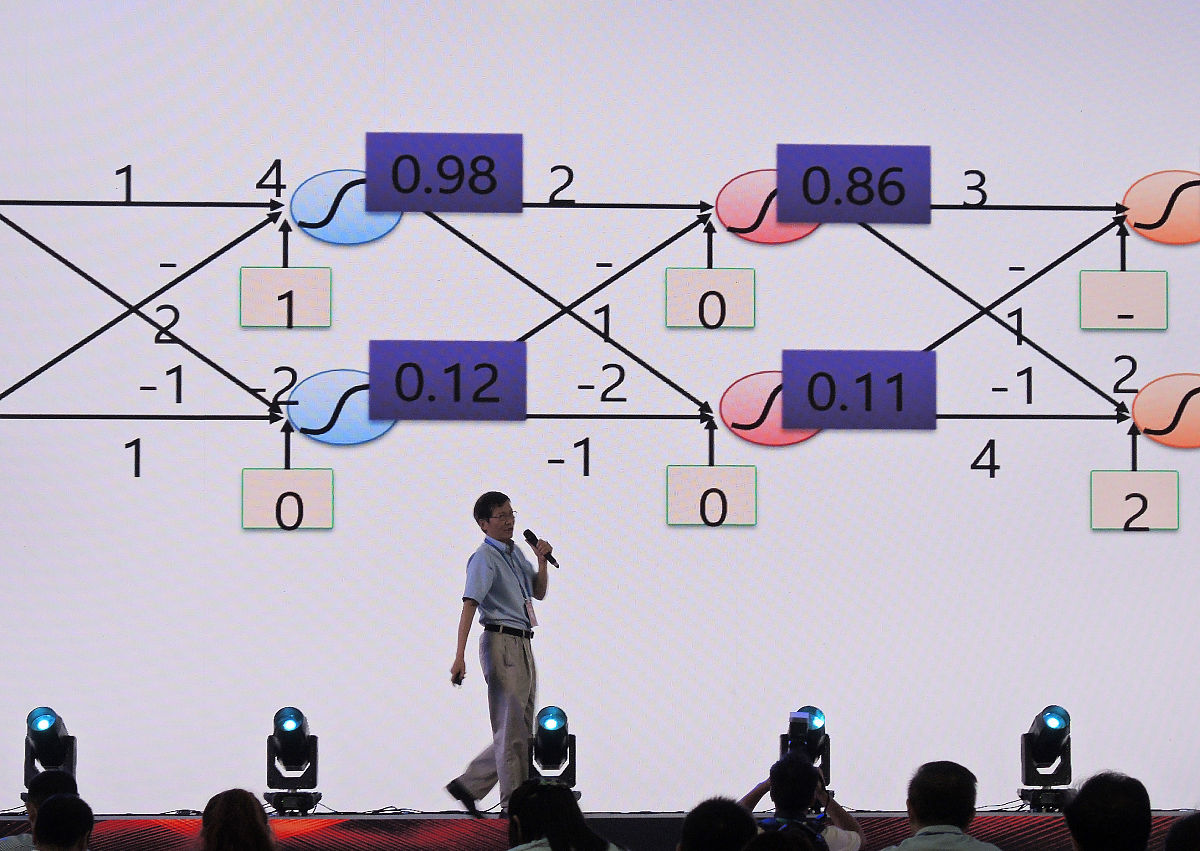线性可分数据分类:Logistic回归与感知机算法对比
线性可分数据分类:Logistic回归与感知机算法对比
本实验使用两个经典的线性分类器,Logistic回归与感知机算法,对线性可分数据进行分类,并使用多种指标对实验结果进行分析。
数据集
- 训练集train.txt: 每行是一个样本点数据(-100~+100之间),每行的最后一个元素为label(+1,-1),训练数据确定线性可分。
- 测试集test.txt: 每行一个样本,数据与train.txt中的样本点数据独立同分布。
实验目标
分别使用Logistic回归与感知机算法,对测试集数据进行分类,输出其对应的label,输出文件名为result.txt,每行一个数据∈{1,-1}。
实验结果分析
由于没有提供数据,无法给出具体代码。以下是一般的实验结果分析方法:
- 准确率分析
使用混淆矩阵计算分类准确率、精确率、召回率和F1值。
- ROC曲线分析
使用sklearn库的'roc_curve'函数绘制ROC曲线,分析分类器的性能。
- 特征重要性分析
- 对于Logistic回归算法,可以使用sklearn库的'coef_'属性获取特征的权重,分析各个特征对分类器的影响。
- 对于感知机算法,可以使用sklearn库的'feature_importances_'属性获取特征的重要性,分析各个特征对分类器的影响。
- 学习曲线分析
使用sklearn库的'learning_curve'函数绘制学习曲线,分析模型的欠拟合或过拟合情况。
- 参数调优
使用网格搜索或随机搜索等方法寻找最优的模型参数,提高分类器的性能。
代码示例
以下是一个使用sklearn库进行Logistic回归和感知机分类的示例代码:
from sklearn.linear_model import LogisticRegression
from sklearn.linear_model import Perceptron
from sklearn.metrics import accuracy_score, confusion_matrix, roc_curve, auc
from sklearn.model_selection import learning_curve
import pandas as pd
import matplotlib.pyplot as plt
# 加载训练集和测试集
train_data = pd.read_csv('train.txt', header=None)
X_train = train_data.iloc[:, :-1]
y_train = train_data.iloc[:, -1]
test_data = pd.read_csv('test.txt', header=None)
X_test = test_data.iloc[:, :-1]
y_test = test_data.iloc[:, -1]
# Logistic回归
logistic_model = LogisticRegression()
logistic_model.fit(X_train, y_train)
y_pred_logistic = logistic_model.predict(X_test)
# 感知机
perceptron_model = Perceptron()
perceptron_model.fit(X_train, y_train)
y_pred_perceptron = perceptron_model.predict(X_test)
# 准确率分析
print('Logistic Regression Accuracy:', accuracy_score(y_test, y_pred_logistic))
print('Perceptron Accuracy:', accuracy_score(y_test, y_pred_perceptron))
# 混淆矩阵
print('Logistic Regression Confusion Matrix:')
print(confusion_matrix(y_test, y_pred_logistic))
print('Perceptron Confusion Matrix:')
print(confusion_matrix(y_test, y_pred_perceptron))
# ROC曲线
fpr_logistic, tpr_logistic, thresholds_logistic = roc_curve(y_test, y_pred_logistic)
roc_auc_logistic = auc(fpr_logistic, tpr_logistic)
fpr_perceptron, tpr_perceptron, thresholds_perceptron = roc_curve(y_test, y_pred_perceptron)
roc_auc_perceptron = auc(fpr_perceptron, tpr_perceptron)
plt.figure()
plt.plot(fpr_logistic, tpr_logistic, label='Logistic Regression (AUC = %0.2f)' % roc_auc_logistic)
plt.plot(fpr_perceptron, tpr_perceptron, label='Perceptron (AUC = %0.2f)' % roc_auc_perceptron)
plt.plot([0, 1], [0, 1], 'k--')
plt.xlim([0.0, 1.0])
plt.ylim([0.0, 1.05])
plt.xlabel('False Positive Rate')
plt.ylabel('True Positive Rate')
plt.title('Receiver Operating Characteristic (ROC) Curve')
plt.legend(loc='lower right')
plt.show()
# 特征重要性分析
print('Logistic Regression Feature Weights:', logistic_model.coef_)
print('Perceptron Feature Importance:', perceptron_model.feature_importances_)
# 学习曲线
train_sizes, train_scores, test_scores = learning_curve(LogisticRegression(), X_train, y_train, cv=5, train_sizes=np.linspace(0.1, 1.0, 5))
plt.figure()
plt.plot(train_sizes, np.mean(train_scores, axis=1), 'o-', label='Training Score')
plt.plot(train_sizes, np.mean(test_scores, axis=1), 'o-', label='Cross-Validation Score')
plt.xlabel('Training Examples')
plt.ylabel('Score')
plt.title('Learning Curve')
plt.legend(loc='best')
plt.show()
# 参数调优
# ...
本示例代码展示了如何使用sklearn库进行分类、绘制ROC曲线和学习曲线,以及获取特征重要性。根据具体的数据集和实验需求,可以调整代码以实现更深入的分析。

原文地址: https://www.cveoy.top/t/topic/nCY2 著作权归作者所有。请勿转载和采集!